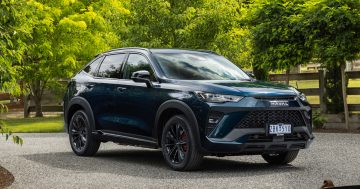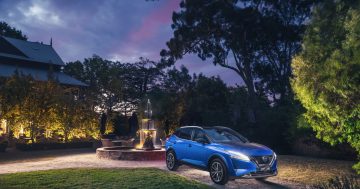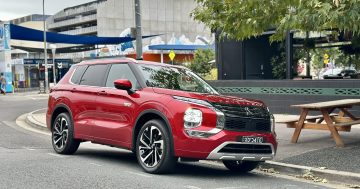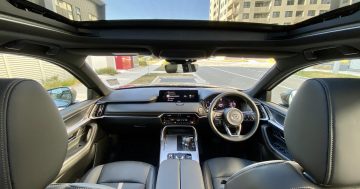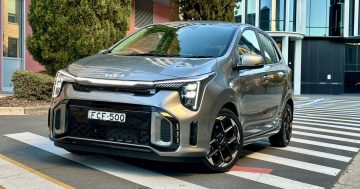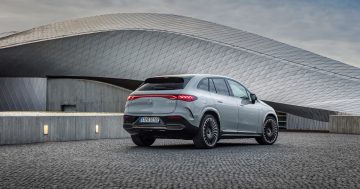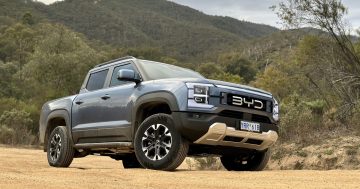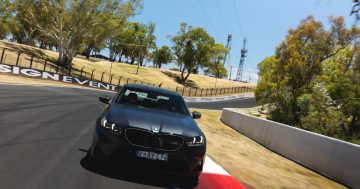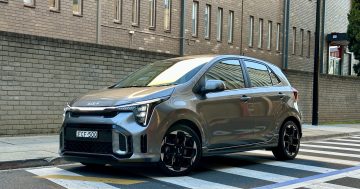By Paul Gover.
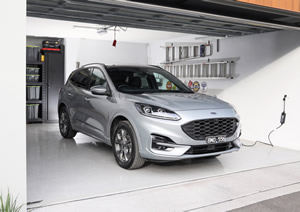 Joining the electrification of motoring in Australia does not have to require a full-on commitment to a battery car.
Joining the electrification of motoring in Australia does not have to require a full-on commitment to a battery car.
Hybrid power is winning many thousands of people, with a combination of green credentials and improved economy in the city and ‘burbs.
Now comes the next step.
It’s a plug-in hybrid, which has a bigger battery and the ability to draw power from the grid – instead of just regenerating while driving – to provide a much longer electric range.
Toyota has been sticking with its basic hybrids, and Kia has decided against the PHEV (Plug-In Electric Vehicle) version of its new Niro, but plenty of other brands are getting serious about the opportunities for plug-in power.
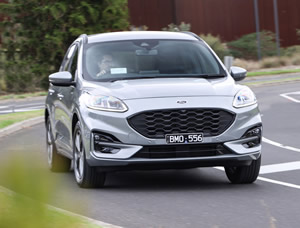 One of them is Ford.
One of them is Ford.
It has a PHEV version of its Escape SUV and, although it’s not cheap, it’s a solid family wagon that can roll for up 56 kilometres as a battery car.
In Europe, where city centres are going to be closed to any form of combustion cars in the reasonably near future, that sort of PHEV motivation makes a lot of sense.
Even in Australia, where most people travel less than 40 kilometres a day on their standard commute, a PHEV can provide a significant boost without breaking the bank – especially with current petrol prices.
It’s easy to charge from a regular garage plug, instead of requiring a dedicated charge box, and hooking it up overnight can usually do the job for at least the following day.
 Which brings us to the Escape itself.
Which brings us to the Escape itself.
To get the bad news done first, moving from an internal-combustion Escape to the PHEV costs an extra $15,000. It also adds a little over 220 kilograms to its weight, which does not help the ride or handling.
But people looking for a mid-sized SUV will find a car that is roomy and quiet, pretty well equipped, and nicely finished – although not a rival for a Kia Sportage or Hyundai Tucson at the top of the class.
The PHEV package boosts the appeal with B&O sound, an electric driver’s seat and an upgrade in the seat covering to fabric with artificial leather.

The rest is much as it comes in the regular Escape, which is doing better in Australia after an update that moved it to the upper-middle range of family-sized SUVs.
The hybrid package brings plenty of benefits, with claimed economy of just 1.5 litres/100km, compared with 8.6 for a petrol model.
It rolls with a frugal 2.5-litre combustion engine in the noise, turning the front wheels through a CVT automatic, and the performance is fine. Not great, but ok.
It’s the same with the handling package, which is nowhere near as sharp as the smaller Ford Puma and is hurt on bumpy roads by the extra weight from the battery.

The best things are that the PHEV will happy run fully-electric up to 110km/h, unlike non plug-in rivals, and the overall range – electric and petrol – is over 600 kilometres. Once you exhaust the battery it just switches to regular combustion power.
Australian consumers are still undecided on PHEVs, but there are going to be a lot more in the next couple of years and the Ford makes a solid case for a practical and usable green machine.
THE BASICS
FORD ESCAPE PHEV
Price: from $53,440
Engine: 2.5-litre 4-cylinder plus electric motor
Output: 167kW
Transmission: CVT auto, front-wheel drive
Position: dual-purpose family SUV
Plus: truly electric, starts with a good base
Minus: too expensive
THE TICK: an easy transition
Score: 8/10


